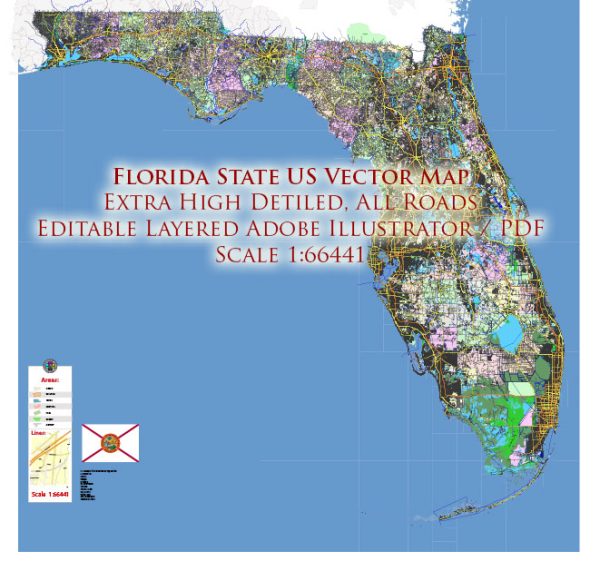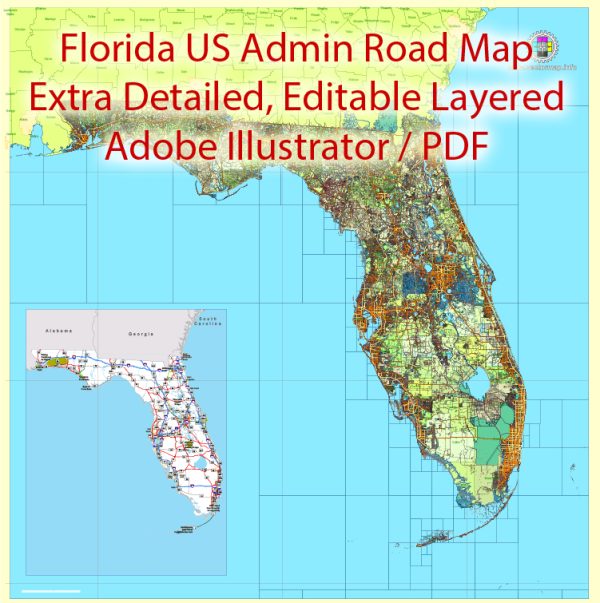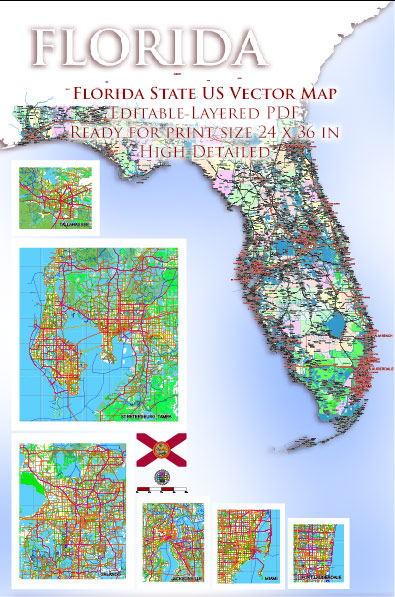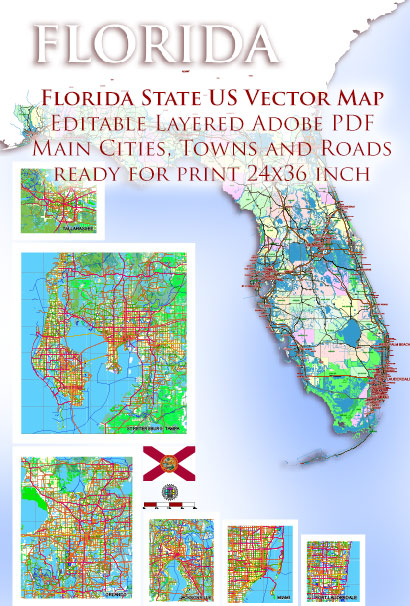Florida’s state history of urban development is a multifaceted narrative that encompasses various periods and influences. The state has undergone significant changes in its urban landscape, driven by factors such as economic growth, population influx, technological advancements, and environmental considerations. Here’s a broad overview of Florida’s urban development history:
- Indigenous Settlements: Before European colonization, indigenous peoples such as the Calusa and the Timucua inhabited what is now Florida. Their settlements were often near water bodies, reflecting the importance of water for transportation and resources.
- Spanish Colonial Period: In the early 16th century, Spanish explorers, including Juan Ponce de León, arrived in Florida. The Spanish established St. Augustine in 1565, making it the oldest continuously inhabited European-established settlement in the continental United States. The layout of St. Augustine reflects the urban planning principles of the time.
- Territorial and Early Statehood Period: Florida became a U.S. territory in 1821. During this period, towns like Tallahassee (the current state capital) and Jacksonville began to develop. The railroad played a crucial role in connecting different parts of the state, fostering economic growth.
- Post-Civil War Reconstruction: The end of the Civil War marked a period of reconstruction and economic expansion. Cities like Tampa and Miami saw increased development, with industries such as cigar manufacturing and tourism contributing to their growth.
- Land Boom of the 1920s: Florida experienced a significant real estate and population boom in the 1920s. Cities like Miami and Coral Gables saw rapid development, fueled by speculative investments. However, this boom was followed by a devastating bust and the Great Depression, leading to economic downturn and slowed urban development.
- Post-World War II Suburbanization: Like many other parts of the United States, Florida experienced suburbanization in the post-World War II era. The construction of highways and the availability of affordable housing outside city centers led to the growth of suburban communities.
- Tourism and Theme Parks: Florida’s tourism industry played a pivotal role in shaping its urban development. The opening of Walt Disney World in Orlando in 1971 marked a significant turning point, attracting a massive influx of residents and tourists. Theme parks, resorts, and entertainment complexes have continued to shape the urban landscape.
- Environmental Concerns: Florida’s unique environmental challenges, including hurricanes, rising sea levels, and ecological preservation, have influenced urban development. Sustainable practices, zoning regulations, and efforts to protect natural habitats are integral aspects of contemporary urban planning.
- Technology and Innovation: The 21st century has seen Florida embrace technological advancements and innovation, especially in cities like Miami, which has become a hub for tech entrepreneurs and startups.
- Diversity and Multiculturalism: Florida’s urban areas reflect a rich tapestry of cultures and ethnicities. Cities like Miami boast diverse populations, contributing to a vibrant cultural scene and influencing urban development patterns.
In summary, Florida’s history of urban development is a dynamic story shaped by a combination of historical, economic, environmental, and cultural factors. The state’s cities continue to evolve, adapting to contemporary challenges and opportunities.





 Author: Kirill Shrayber, Ph.D.
Author: Kirill Shrayber, Ph.D.